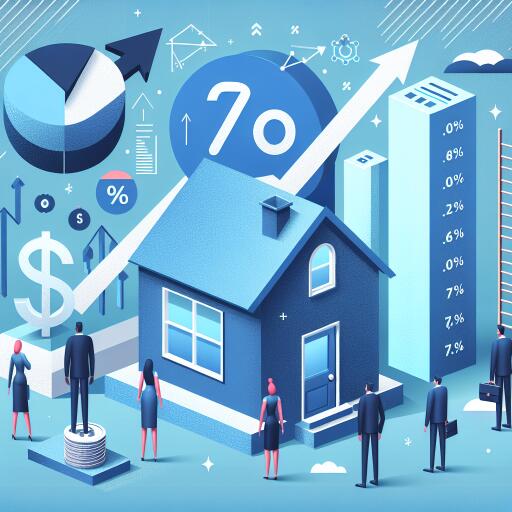Mortgage Rates Surge Over 7% Amid Strong Economic Indicators
In a substantial financial shift, the average rate for the benchmark 30-year fixed mortgage has soared past 7% to 7.04%, highlighting the first surge above this threshold since December. This uptick, reported by Mortgage News Daily, underscores a significant market reaction to unexpectedly strong economic reports, including a robust January employment update and a positive monthly manufacturing index.
This climb in mortgage rates follows a period of volatility, where rates momentarily reached a 20-year peak at 8% last October. However, they had dropped significantly as the market speculated on the Federal Reserve’s halt in interest rate hikes. While mortgage rates are not directly tied to the Federal Reserve’s actions, they are influenced by the yield on the 10-year Treasury, which reflects economic perceptions at any given time.
Recent economic data has thrown cold water on hopes for rate cuts, with Mortgage News Daily’s COO, Matthew Graham, noting the market’s overly optimistic view versus the reality of the data’s impact on rates. In parallel, the housing market has experienced a slight revival in demand and inventory, though overall supply remains tight, sustaining high prices and competition.
The resilience of home prices, coupled with constrained supply, rendered 2023 the slowest year for home sales since 1995. Looking ahead, 2024 is cautiously anticipated to show improvement. However, the relationship between a strong job market, household income, and the prospect of sustained higher mortgage rates complicates the outlook for the impending spring home-buying season.
Even minor fluctuations in rates significantly impact affordability due to the elevated home prices, with a mere half-percentage point change influencing monthly payments by over $200 on median-priced homes. As for the future, much depends on upcoming economic reports and inflation trends. A cooler inflation report could offer some balance, but recent data suggest rates may struggle to dip below 7%.
